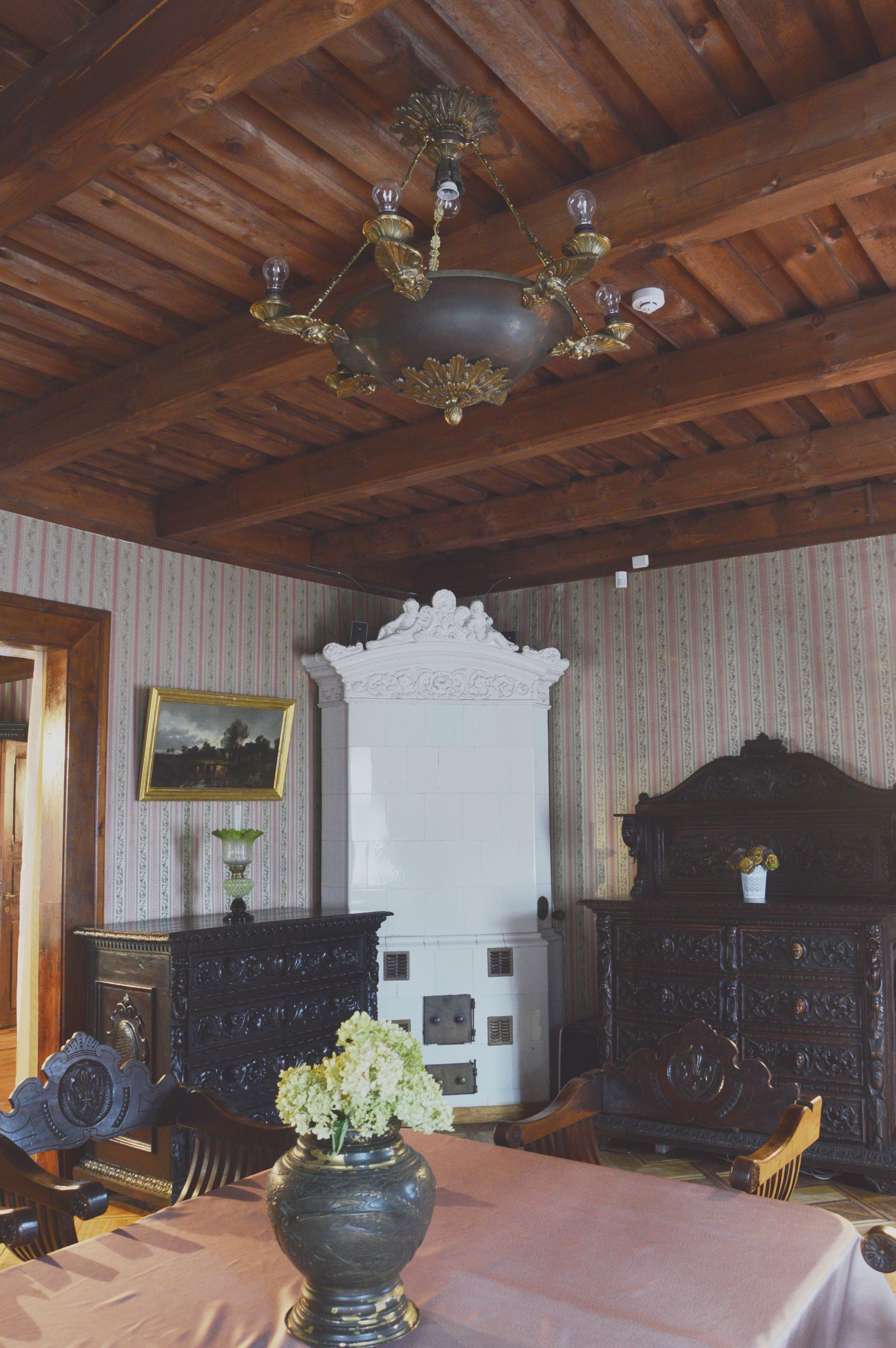Literary Museum of Alexander Pushkin
-
Address: Subačiaus str. 124, Vilnius
Time of origin: 1887–1911
Place of origin: Russia (?) / Poland (?)
Material, Technique: bronze: casting, repoussé, cizeling; oxidation
Dimensions: height – 50 cm, diameter – 90 cm
In the Literary Museum of Alexander Pushkin, founded in the early wooden manor belonging to Varvara and Grigory Pushkin in the 19th – early 20th century, preserved chandelier consists of a dish with six arms, chains and a rosette with a socket for a light bulb. The chandeliers of such structure were called dishlight, and they spread along with the revival of antique art in the late 18th century. The chandelier from the former manor was made when the electric lighting was already established, i.e., in the late 19th – early 20th century. Its structure and ornamented cast parts are of neo-Empire style. The décor of acanthus leaves, which creates a rosette at the top of the chandelier and beneath the dish, is typical. It is worth paying attention to the ornament of arms. They depict women’s faces with kokoshnik-like old-time head cover (worn by wedded women in Russia in the 18th – 19th centuries). The exceptional rare décor of arms suggests that the work of applied art could be produced in the industrial workshops of the Russian Empire.
Gintaras Kazlauskas renovated the chandelier in the National cultural heritage restoration trust in 1986. The ten-arm chandelier of the same décor adorns the interior of the town hall in Skierniewice, Łódź voivodship, Poland.
Although Varvara and Grigory Pushkin have never dined beneath this chandelier (the chandelier was acquired during the renovation of the manor in 1980), it harmoniously complements the authentic interior of the manor’s dining room. A small number of dishlight chandeliers have survived in Lithuania. Therefore, this mass-produced chandelier has a typological value.
Literature and sources:- Kultūros paminklo restauravimo pasas. Vilniaus m. Literatūrinio A. Puškino muziejaus žalvarinė septynių žvakių liustra, in: Kultūros paveldo centro biblioteka, f. 40, ap.1, b. 51.
- Skernevicės (lenk. Skierniewice) rotušės sietynas, in: Lenkijos nacionalinio paveldo instituto archyvas, Nr. SKX 420 002 518.
- Valtaitė-Gagač Alantė, XVII a.–XX a. 4 dešimtmečio sietynų paveldas Lietuvoje: Daktaro disertacija, Vilnius: Vilniaus dailės akademija, 2015, p. 230.



